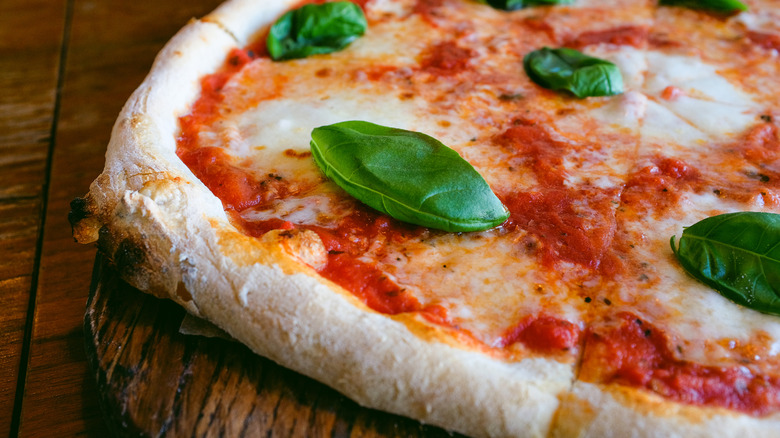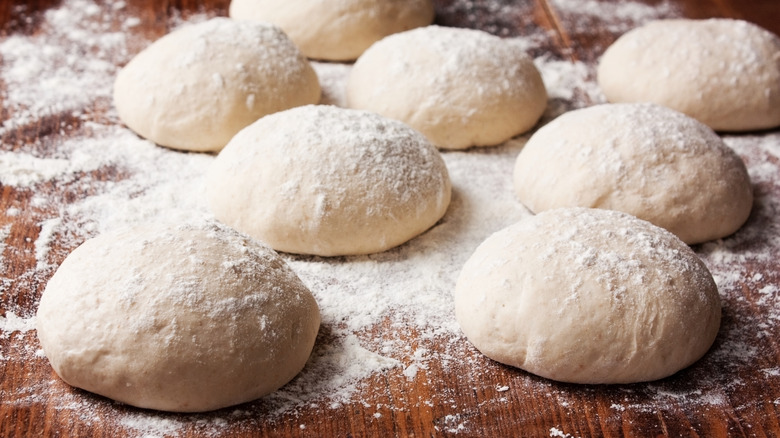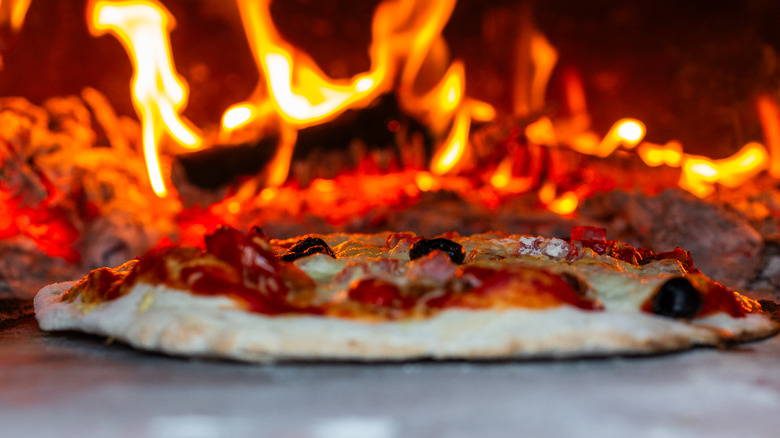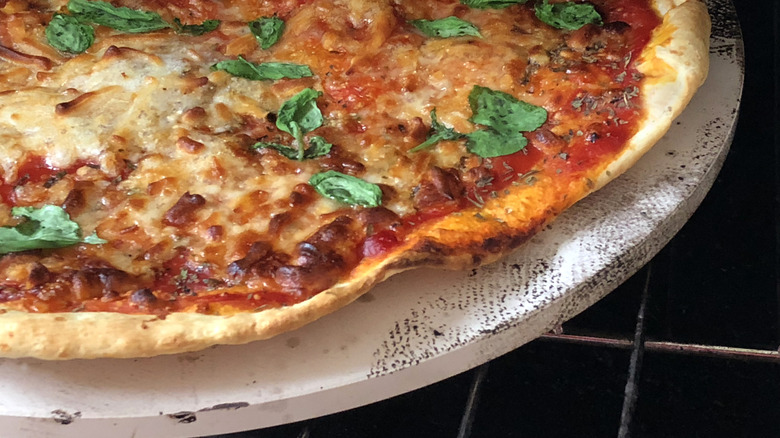An Expert Explains How To Get The Perfect Crispy Pizza Crust At Home
Pizza is a staple of takeouts and fancy restaurants alike, but you can make truly great pizzas at home as well. However, without devoting an entire business to crafting pizzas and purchasing a pizza oven, there are aspects that too often fall flat when home cooks get out the pizza dough. The crust is key to a good pizza, but it's also one of the hardest elements to get right, and it is all too easy to end up with a sad, soggy, and chewy pizza base that just doesn't spark much joy.
To get the best tips on beating the soggy pizza crust, Chowhound spoke exclusively with Nicole Bean, owner and operator of two pizzeria locations. The Pizaro's Pizza Napoletana restaurants are operated by Bean and her family, and they definitely know a thing or two about getting pizza crusts perfect. Bean explained the little tricks that can help you hone in on that perfect pizza yourself, prioritizing ingredients, equipment, and cooking processes.
Getting your pizza dough ready
Making great pizza bases requires a delicate balancing act. The wet to dry ingredients need to be set just right, so it's not too sticky and not too dry. The amount of kneading and gluten production needs to be balanced so that the dough is stretchy but not chewy. Once you've got those basics down, Nicole Bean has one more tip for your dough: "You can add olive oil to the top or incorporate some inside of your dough mixture." Just make sure you're using a tiny percentage.
If you're working the olive oil into the dough, you don't want to do much, or the pizza dough can get too soggy, leaving you with an oily, greasy mouthfeel. Brushing a very thin layer of olive oil over the pizza base before you put the toppings on helps in two ways. For the exposed dough, it helps the crust get crispy in the same way oil helps in a pan. But it also creates an oil barrier between the dough and the sauce and the toppings, meaning that the moisture from the other pizza ingredients won't seep into a soggy base.
Getting your oven ready for your pizza
When it comes to actually cooking your pizza in the oven, Nicole Bean's advice requires knowledge of what type of pizza you're making. It also, perhaps, needs a little trial and error to find what's right for your oven. "Another way is how you cook," says Bean. "This could be reducing the temperature on your oven and baking for longer, or increasing your temperature and cooking for a shorter amount of time."
If you are making a thick crust pizza, you might want a chewy center to the crust, or your might want it to be truly crispy throughout. To do that, you'll need to cook your pizza low and slow. In a hot oven, the outside will crisp and then start to burn before the dough in the middle starts to get properly crispy. However, if you want that chewier center to your crust, or if you are looking to make a very thin and crusty base for your homemade pizza, then you'll want to crank that heat up and only cook the pizza for a shorter amount of time.
Equipment to help get a crispy pizza crust
Pizza ovens that are used at full time pizzerias get seriously hot. They'll often get up to 700 to 800 degrees Fahrenheit. While part of that is so that they can cook pizza after pizza without having to worry that the oven temperature will drop too much, it's also because it's a great way to get a super crispy thin crust pizza quickly. Most likely, your oven at home can't get to those temperatures safely, but there are other solutions.
Nicola Bean notes that "Pizza stones or steels are also extremely helpful when cooking at home." Heating your pizza stone in the oven can take 30 to 60 minutes, depending on your oven and your equipment. Once it is fully heated to the temperature of your oven, you can transfer your pizza to the stone or the steel, and the heat that it holds will make a more efficient and crispy cook that will mimic a thin crust pizza from a restaurant. As a final note, Bean also suggests that you "make sure that your pizza is closer to the heating element, but not too close that it burns it."



